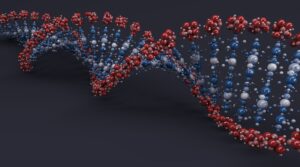Lewy Body Dementia Symptoms: Recognizing and Managing Them
Lewy body dementia (DLB) and Parkinson’s disease dementia (PDD) are two primary forms of this disorder. Though their symptoms are identical, the timing of these signs distinguishes both disorders. Usually starting with cognitive problems like memory loss or confusion, DLB moves to encompass mobility difficulties. PDD, on the other hand, begins with movement problems such as tremors or stiffness and then progresses into cognitive loss. As the disease advances through several Lewy body disease stages, the existence of these Lewy bodies influences many brain areas, including those in charge of memory, movement, and behavior, therefore producing a wide range of symptoms that can be especially difficult to control.
Main Symptoms of Lewy Body Dementia
Lewy body dementia shows a wide spectrum of symptoms that differ greatly between people. Early detection and good management depend on a thorough understanding of these signs.
Movement Issues
One of the most well-known Lewy body symptoms is the start of motor abnormalities quite similar to those of Parkinson’s disease. These complaints consist of:
- Bradykinesia: Bradykinesia, sometimes known as slowness of movement, is a common occurrence in patients whereby their pace of movement clearly decreases. This might cause daily chores like eating or getting dressed to take far more time. Apart from physical mobility, the slowness influences their mental processes, which causes delays in reaction times and decision-making.
- Muscle Rigidity: Muscle stiffness commonly generates discomfort and agony. Limited range of motion and a stooped posture can result from this rigidity, making mobility challenging. This stiffness may become more noticeable over time, therefore significantly limiting mobility.
- Tremors: Like those with Parkinson’s disease, Lewy body dementia sufferers may have tremors—usually in the hands. Usually more obvious when the person is at rest, these shakes might impede activities requiring fine motor skills like writing or using utensils.
- Shuffling Gait: Walking gets harder as the condition advances. Patients might start to walk with a shuffling gait—that is, with short, dragging steps. This altered gait along with balance problems raise the likelihood of falls, which can cause injuries and complicate treatment even more.
Cognitive Symptoms
Though it is a main characteristic of Lewy body dementia, cognitive decline shows different patterns than in other dementias, including Alzheimer’s disease. Important cognitive problems consist of the following:
- Fluctuating Attention and Alertness: Unlike Alzheimer’s, where memory loss is more constant, Lewy body dementia individuals often have notable swings in attention and attentiveness. For patients and caregivers especially, this can cause times of extreme bewilderment followed by almost normal cognitive ability, which can be especially perplexing and upsetting.
- Difficulty with Visual-Spatial Tasks: Patients who have trouble with visual-spatial tasks—such as distance judgment or object relationship perception—may find difficulty with tasks requiring such skills. Their driving, navigating familiar surroundings, or even face recognition may all suffer as a result.
- Memory Loss: Although early on memory issues might not be as noticeable as in Alzheimer’s disease, as Lewy body dementia advances they do become more clear. Patients’ difficulty creating fresh memories or remembering recent events adds to their general disorientation and bewilderment.
- Language Difficulties: Some patients may have trouble understanding complicated directions, following discussions, or finding the appropriate words. Social disengagement and frustration might follow from communication becoming increasingly difficult.
Sleep Problems
Another feature of Lewy body dementia is disturbed sleep, which usually first shows early in the course of the condition:
- REM Sleep Behavior Disorder (RBD): One of the most unique symptoms of Lewy body dementia is REM sleep behavior disorder, in which patients sometimes act out their dreams, occasionally violently. For the sufferer as well as their bedmate, this might cause damage. Often, one of the early signs of Lewy body dementia, RBD, can strike years before other symptoms start to show.
- Daytime Sleepiness: Patients may have extreme daytime sleepiness even if their nighttime sleep is disturbed. Extended naps during the day can result from this, therefore upsetting their sleep-wake cycle and aggravating cognitive and psychological problems.
- Insomnia: Commonly resulting from anxiety, restlessness, or physical discomfort, insomnia is trouble falling or staying asleep. The patient’s quality of life may be greatly disrupted by insomnia, which can cause cognitive impairment, confusion, and more agitation.
Dysautonomia
Dysautonomia is the condition of dysfunctions of the autonomic nerve system, which regulates involuntary body activities. In Lewy body dementia, this can show up in multiple ways:
- Changes in Blood Pressure: Patients may have major swings in blood pressure, which might cause episodes of vertigo, fainting, or falls. Particularly prevalent and potentially deadly if improperly controlled is orthostatic hypotension, in which blood pressure falls significantly upon standing.
- Issues with Digestion: A common issue is constipation, which usually results from a slowed-down digestive system’s action. This can lead to bowel blockage risk, bloating, and pain. Furthermore, some patients may have dysphagia or trouble swallowing, which can cause nutritional deficits and weight loss.
- Bladder Dysfunction: Commonly occurring bladder dysfunction is urinary incontinence or trouble completely emptying the bladder. Especially in patients with mobility problems, these problems can cause urinary tract infections and need frequent bathroom trips, which can be difficult to control.
- Sexual Dysfunction: Sexual dysfunction can also impair libido, erectile dysfunction in men, or other sexual problems resulting from dysautonomia, therefore aggravating emotional stress and straying relationships.
Mood and Behavior Change
Some of the most difficult symptoms for caretakers to control are Lewy body dementia’s typically marked changes in mood and behavior.
- Depression and Anxiety: Many patients experience despair and anxiety, which could result from the consequences of the illness on the brain as well as from the psychological burden of having a progressing, incapacitating illness. These mood disorders can aggravate cognitive problems; hence, managing the disease becomes much more challenging.
- Apathy: Commonly lacking enthusiasm or drive to participate in once-enjoyable activities. As patients withdraw from friends, family, and activities, their quality of life is reduced, and this apathy can result in social isolation.
- Hallucinations: Early on in the illness, visual hallucinations—a hallmark of Lewy body dementia—can strike. Patients may find it terrifying or perplexing when they perceive items, people, or animals absent from their surroundings. These hallucinations are especially upsetting since they are often vivid and detailed, unlike other forms of dementia.
- Paranoia and Delusions: Some individuals may develop paranoia or delusions, thinking that someone is out to hurt them or that they are being persecuted in some other capacity. Caregiving is especially difficult since these symptoms might cause more agitation, hostility, and mistrust.
Understanding the Stages of the Disease
Lewy body dementia moves through numerous phases, each distinguished by worsening symptoms and more difficulties for caregivers for old people as well as for patients. Planning treatment and controlling expectations depend on an awareness of the several stages of Lewy body disease.
Early on, cognitive and motor symptoms may be minor and under control. Patients may have minor variations in concentration, minimal mobility trouble, or sleep abnormalities. But as the illness progresses, these symptoms become more noticeable: cognitive deterioration, motor problems, and more frequent hallucinations all around.
More severe cognitive impairment, including confusion, memory loss, and language difficulty, defines the intermediate stages of Lewy body dementia. Movement problems also show more clearly and usually call for the usage of mobility aids. additional frequent and vivid hallucinations are another possibility for patients that could cause additional anxiety and disturbance.
Late on, patients sometimes lose their capacity to engage in regular independent daily tasks. Common is severe cognitive impairment involving great memory loss and loss of recognition of loved ones. Physical symptoms like tremors and rigidity become more incapacitating and can cause total reliance on caretakers. The great emotional toll that patients and caregivers bear emphasizes the need for thorough support and treatment.
What Causes Lewy Body Dementia?
Though much is yet unknown, recent studies have clarified some of the basic causes of Lewy body dementia. One of the latest advances in understanding what causes Lewy body dementia is the discovery of an increasing number of gene mutations. Research on APOE and GBA genes has found that variations in these genes raise the risk of Lewy body dementia. Already linked to Alzheimer’s disease, the APOE gene is now identified as a major risk factor for DLB as well. Related to Gaucher’s disease, the GBA gene also contributes to raised susceptibility to Lewy body dementia.
These genetic findings are vital since they provide the path for a future targeted treatment development and a deeper knowledge of the processes of the disease. Still, genes play merely a role in the picture. Lewy body dementia risk also comes from environmental elements, way of life, and other medical disorders. Knowing these risk factors might be rather helpful for those looking after someone with DLB in managing their illness.
How is Lewy Body Dementia Diagnosed?
Because Lewy body dementia overlaps with other neurological diseases, diagnosis is famously difficult. Early symptoms of Lewy body dementia are sometimes confused for disorders, including Alzheimer’s disease, Parkinson’s disease, or even psychiatric problems like depression or schizophrenia. This uncertainty results from the lack of medical testing that is able to identify dementia with Lewy bodies precisely.
Usually, a diagnosis consists of a thorough assessment under the direction of a team of experts comprising neurologists, geriatricians, neuropsychologists, and geriatric psychiatrists. Every specialist is quite important for the diagnosis:
- Neurologists focus on the nervous system and brain function, helping to identify the movement-related and cognitive symptoms of DLB.
- Geriatric psychiatrists assess mood, behavior, and psychological symptoms, distinguishing DLB from psychiatric disorders.
- Neuropsychologists conduct cognitive testing to evaluate memory, attention, problem-solving, and other mental functions.
- Geriatricians specialize in the overall health care of older adults, ensuring that other age-related conditions are considered and managed.
This multidisciplinary approach is essential for an accurate diagnosis, allowing for the most effective treatment plan to be developed. Understanding that no single test can confirm Lewy body dementia highlights the importance of recognizing Lewy body dementia symptoms early and seeking specialist care.
Key Points
A complicated and multifarious condition, Lewy body dementia calls for early diagnosis and thorough treatment. Timeliness of action depends on an awareness of the Lewy body dementia symptoms and their differences from other Alzheimer’s disease and related dementias. Understanding the stages of Lewy body disease and how they affect cognitive and physical capacity can enable caregivers be ready for the difficulties that lie ahead.
Though early diagnosis is still essential for proper management of Lewy body dementia, recent developments in its etiology offer promise for future treatments. Accurate diagnosis of DLB often requires a multimodal approach, including neurologists, geriatric psychiatrists, neuropsychologists, and geriatricians.
For people looking for assistance, a first step could be a free consultation with medical professionals. Compassionate treatment and support become ever more important as the illness advances not only for the patients but also for their caretakers, who deal with major mental and physical obstacles.






Post Comments